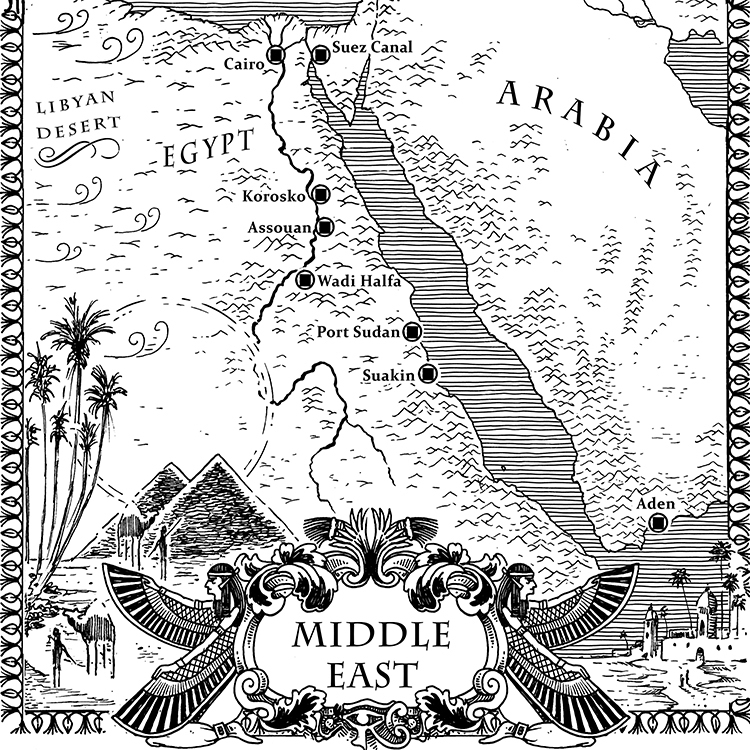Who knew that Arthur Conan Doyle, the creator of Sherlock Holmes, also wrote one of the first novels, perhaps the first novel, about Islamic fundamentalism in the Middle East? Titled The Tragedy of Korosko, the book was published in 1898, though serialized in The Strand magazine the previous year, and was based on Conan Doyle’s travels in Egypt from 1895 to 1896.
The Tragedy of Korosko tells of a group of Western tourists captured by followers of the Mahdi, the Sudanese leader whom the British were fighting at the time. It is actually very respectful of the men of the desert, their ascetic lifestyle in a harsh environment, which is beautifully evoked. But then, Conan Doyle was already skilled at writing about places. He was a great observer—no surprise from the man who created the world’s greatest consulting detective—and he conveyed that in everything he wrote.
Conan Doyle was in Egypt for personal reasons. His wife Louise suffered from tuberculosis and he hoped the dry heat would bring about a cure. He wrote interestingly about making his way from Cairo into the Libyan desert, traveling in a gilded coach that had been prepared for the French Emperor Napoleon III at the time of the opening of the Suez Canal. But then war against the Mahdi intervened, and Conan Doyle signed up as a correspondent for a London newspaper, which gave him the additional opportunity to travel to Aswan and Upper Egypt to report his experiences.
19th-Century Renaissance Man
Conan Doyle started writing about places while studying medicine at Edinburgh University in 1880. He was still only 20 when he took a six month job as a doctor on a whaling ship, the SS Hope, in the Arctic. This resulted in some extraordinary reports about the realities (and the cruelty) of whaling, as well as about the beauty and loneliness of the frozen North. He turned these observations into vivid fiction in his story “The Captain of the Pole-Star,” published in 1883.
Conan Doyle’s passion for photography led him to many interesting places within Britain, which he wrote up. On graduating, he landed another job as a ship’s doctor, traveling down the coast of West Africa, visiting countries like Sierra Leone while en route to what is now Nigeria. Cue once again for some remarkable travel writing.
A decade later he began visiting Switzerland where he wrote some of the first articles about skiing, a sport which he helped introduce to the British. As with his travels, Conan Doyle’s experiences ended up in his fiction as well as in his nonfiction—Switzerland, of course, is where Sherlock Holmes grapples with his arch-enemy, Moriarty, at the Reichenbach Falls outside Meiringen.
Subsequent journeys took Conan Doyle to North Africa and Istanbul (where he met the Sultan), and to the Indian subcontinent and Australasia. He also traveled to the United States on several occasions, and saw cities like New York evolveover three decades. He particularly liked San Francisco, though his passion was the Rockies. Once he visited Catalina Island, off the Californian coast, which was owned by William Wrigley, the chewing-gum king. Conan Doyle reported that he disliked gum, but thought it would only be a passing habit, like the taking of snuff in previous generations.
Andrew Lycett’s Conan Doyle’s Wide World: Sherlock Holmes and Beyond is out now from Bloomsbury
